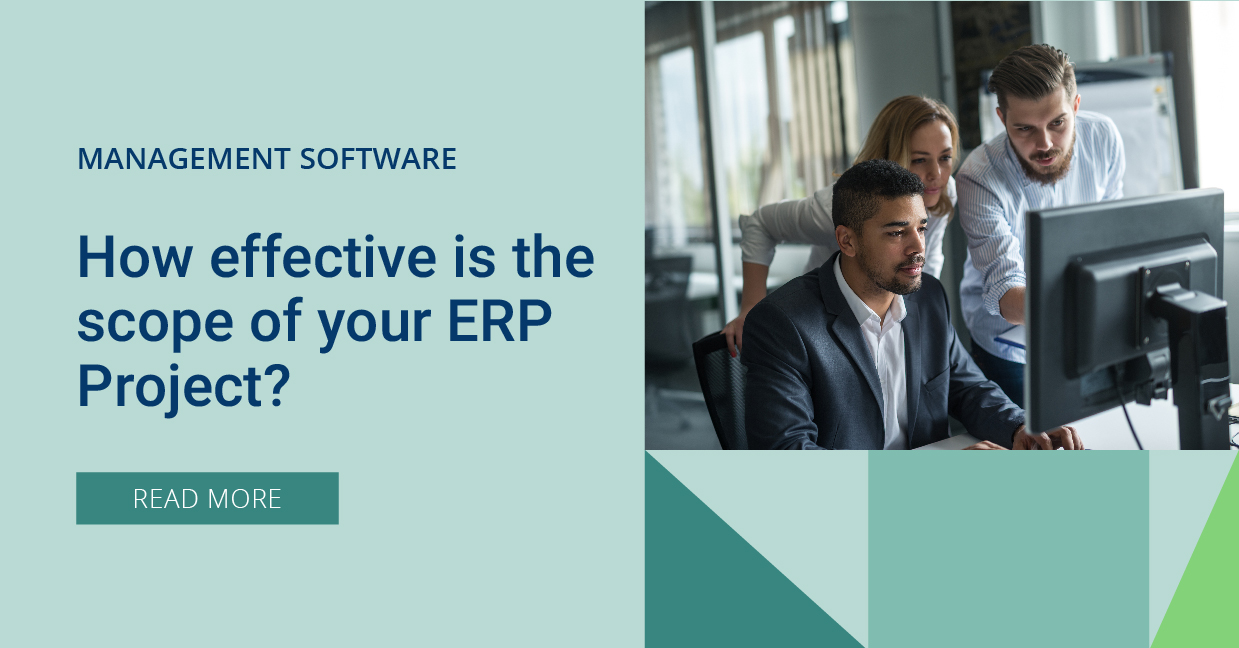
How effective is the scope of your next ERP project?
Most buyers of new ERP software systems often make the same common mistake. They have put off replacing their existing systems for so long that they want to implement too many functionalities all at once. They frequently overestimate their own capabilities and skills and, at the same time, underestimate the complexity and size of their projects. The consequences of these choices are evident: delays, frustration, damage in many areas and sometimes even serious legal conflicts.
It’s a well-known, but persistent pitfall that organisations all over the world trip over their own ambitions to make a new implementation succeed. Again and again, simplicity as a crucial success factor is often forgotten. It frequently starts with nailing down the scope of the project. The broader the design and the more users, departments and third parties involved, the greater the chance of failure. And once that far too heavy implementation is finally operational, there’s no energy and impetus left for follow-up. The final result is a marginally-functioning system in which you are soon losing ground.
It’s a good idea, of course, to choose your solution and implementation partner with care. After all, you want to enjoy and benefit from your investments for many years. But does that automatically mean that you have to implement all that exciting new functionality at once?
What we suggest is that you inform yourself broadly and then implement it narrowly, in a step-by-step approach.
Especially when implementing cloud software, your implementation project should be less of a big-bang approach like we’ve seen a lot in traditional projects. With cloud software, you can choose for an ‘ever-green’ format with a stream of frequent small, incremental improvements so that your implementation is no longer a fixed project, but becomes more of a continuous process.
So limit the scope for the first phase. Choose a short implementation duration and enjoy the first benefits as quickly as possible. We all know how these ‘quick wins’ can enthuse others, right? But then don’t forget to follow through with phase 2. And phase 3. All too often, these next steps simply stay on the shelf in the bustle of everyday life.
Keeping your ambitions under control during the start-up phase reduces risks, increases your success chances and delivers the first benefits more quickly. Most importantly, it keeps energy and budget in reserve for the crucial next steps in this continuing change process. Because you can be assured that your customers’ preferences will continue to change in the near future.
August 8, 2022
RECENT POSTS
Business Central & Returns Management
Returns management is the process of handling returned products efficiently to ensure a seamless experience for both customers and businesses. As a comprehensive ERP system, Business Central has a number of standard modules [...]
Business Central How-To: FastTabs & FactBoxes
Business Central, a user-friendly ERP system, has plenty of terminologies specific to the product, and if you’re moving across to BC from some other program, or even considering an upgrade from NAV to BC, it [...]
How Does Business Central Handle Inventory Management?
Inventory Management is a module in Business Central that helps SMBs manage their inventory and other operations within a single platform. SMBs can track, manage, and optimise stock levels across locations. Microsoft Dynamics [...]


